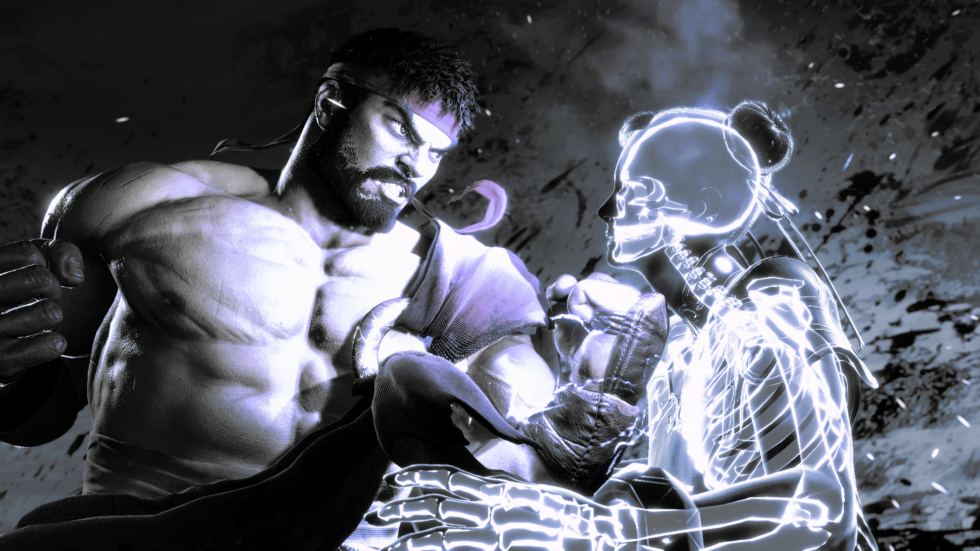Driving ahead with the enticing new “drive” system

Once I switched to the classic control suite in my testing, I didn't return to modern. Why? Because most of the stuff I needed to effectively fight was at my disposal.
However you choose to play SF6, its new "drive" system has been designed to be immediately comprehensible so that anyone can feel like they're in a real fight—able to commit to specific counters or tactics based on timing. In both control modes, the two biggest abilities on the counter and responsiveness front are one button press away.
The first, "drive impact," most resembles focus attacks from Street Fighter IV. If you feel like an enemy is approaching with a specific straightforward attack, use this move to absorb some of the hit and then blow them back with a brutal attack. As in SF4, this requires commitment on a recovery level, but it has another cost: two bars of your "drive meter" (which maxes out at six bars and exists alongside the traditional "super" attack bar). Unlike in SF4, this move has a fixed "wind-up." Also unlike SF4, it doesn't absorb the same infinite amount of damage that focus attacks did; if a foe lands a three-hit combo while you're winding up in drive impact mode, the collision will end with both parties getting knocked down."Drive parry," comparatively, drains roughly one drive meter bar and simply catches a foe's attack in a way that still requires successful parry users to respond with an appropriate attack (and doesn't have the same finite damage-absorption caveat as drive impact). For more battling spice, you can hold drive parry down until it drains the entirety of your meter (though if you stand still doing this for too long, your opponent can throw you or otherwise counter; it's meant for more instant attack responses).
Drive parrying presents an additional benefit for savvy players: It restores a single bar of your drive meter when used successfully. So in instances you would normally use an anti-air attack like a dragon punch, you might notice your drive bar running low and opt for a parry instead. (From there, attackers have the new option to expect a parry, land with a non-attack, and punish the parry's recovery window.) Parries are always done while standing upright, not kneeling, and they cannot be activated while in mid-air. (Sorry, SF Alpha fans; mid-air blocks have been nixed.)
Drive system, continued: Overdrive, reversal, rush, and burnout

The following section goes deeper into the drive bar's nuts and bolts. While these explanations provide more information than casual fighting game fans may need, they show interesting twists to the series' usual battling cadence in ways I haven't seen other fighting games attempt.
During the course of routine combat, SF6 stresses the importance of its drive bar in key ways. Longtime SF players know about "EX" attacks, which consume a small portion of the super attack bar and supercharge your existing special attacks, like a double-burst Hadouken or a longer Chun-Li kick flurry. These are now known as "overdrive" attacks. They're activated the same way as classic EX attacks: Press two punch or kick buttons instead of one while committing to a normal attack pattern. But now, instead of sipping at your super attack meter, these moves cost two bars of drive meter.
There are two more drive moves to list, and each costs a single bar of the drive meter. The first, "drive reversal," must be activated as a perfectly timed block to push foes away ("hard punch," "hard kick," and forward on the joystick, simultaneously). The second, "drive rush," is an instant, temporarily invincible dash forward (tap forward twice while standing in drive parry stance). Admittedly, these moves didn't figure as much into my SGF demo's fun; the drive reversal in particular was too finicky to effectively activate, and even Capcom representatives couldn't consistently trigger the effect.But I can already imagine both being useful, and there's also the matter of the drive bar's dark side—"burnout"—figuring into tougher fights. When your drive bar is spent, your fighter looks dazed, and he or she suffers from a bunch of temporary debuffs. In addition to reduced speed, reduced damage, and reduced defense stats, players in burnout mode can be stunned if a foe pulls off a successful drive impact attack (and there's no other way to induce stun in SF6).
Additionally, the concept of "chip damage" has been changed. When you take damage while blocking, this now wears down your drive bar's meter. If you're in burnout, chip damage wears down your health more than in older Street Fighter games—and makes the issue of dying by blocked fireballs a lot more dramatic as a result.
reader comments
79